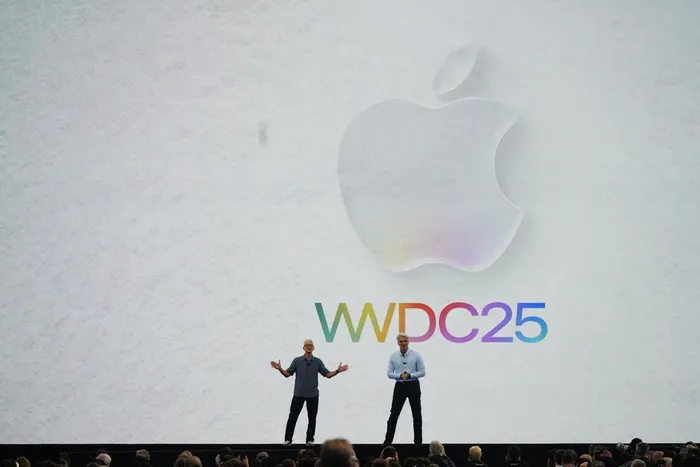America's Manufacturing Strategy and What It Means for the Global Economy

CEO Tim Cook (L) attends the 2025 Apple Worldwide Developers Conference (WWDC25) in Cupertino, California, the United States, June 9, 2025.
Image: Xinhua
Over the past year, the United States (US) has accelerated efforts to reshore manufacturing, with former President Donald Trump at the forefront of a renewed drive to “bring American industry home.” A wave of corporate investment, led by tech giants like Apple, Nvidia, Micron, and IBM, is shifting the global manufacturing map. Trump’s latest announcement, alongside Apple CEO Tim Cook, revealed a historic $600 billion investment from Apple alone, focused on expanding American-based factories, rare earth recycling, chip fabrication, and data centres.
America Brings Manufacturing Home
This marks a major turning point in global supply chains. From Kentucky’s smartphone glass plants to AI server hubs in Texas and rare earth facilities in California, the US is doubling down on high-tech and high-value manufacturing. The incentives include favourable tax legislation, fast-track construction approvals, and tariff waivers for companies building on US soil.
A key policy shift is the proposed 100% tariff on imported chips and semiconductors, exempting only companies actively building production capacity in the US. The move, combined with secondary sanctions on nations purchasing Russian oil, signals a broader strategy to realign global trade and industry flows around American interests.
This reshoring push signals trouble for traditional manufacturing hubs in East Asia, where lower labour costs once dominated decision-making. As US capital, jobs, and technology return home, countries like China, Taiwan, and Vietnam may face downward pressure on exports and foreign investment.
Global Supply Chain Implications Real or None?
The implications of the US' return to domestic manufacturing, underpinned by policy and security, are increasingly reshaping the global industrial landscape. “Made in America” is no longer a nostalgic slogan; it is fast becoming a strategic imperative. However, reviving old-school manufacturing thinking in today’s high-tech, globally integrated world is proving far from straightforward.
While political rhetoric may champion a renaissance in domestic industry, the complexity of modern supply chains makes it difficult to simply “reshore” production at scale. Advanced manufacturing today depends not just on factories and labour, but on access to globalised inputs: rare earth materials, high-tech semiconductors, specialised components, and digital integration. For instance, a single smartphone can involve over 200 suppliers across 40 countries. Apple’s supply network spans Asia, Europe, and North America, highlighting how even with $600 billion in planned US investment, re-engineering entire ecosystems is a long-term and uneven process.
Technological Interconnectedness
Technological interdependence complicates reshoring efforts. Semiconductor fabrication, for example, is a prime target for American industrial policy, with companies like TSMC and Intel investing billions in US plants. Yet, building domestic chip capacity to meet even 70% of local demand would require over $350 billion and at least a decade. Similarly, retraining the workforce for AI-enabled manufacturing environments presents structural challenges. In the US alone, over 2.1 million manufacturing jobs are projected to go unfilled by 2030 due to a skills mismatch.
For emerging markets, the consequences are equally complex. Many have developed export-led growth strategies by serving as manufacturing hubs for Western brands. As the US and others decouple from China or reduce dependency on foreign suppliers, countries like Vietnam, Mexico, and India may benefit from supply chain diversification, but only if they can meet new standards around cybersecurity, intellectual property, and sustainability.
Alternatively, regions such as ASEAN (Association of Southeast Asian Nations), Latin America, and Africa may look inward, strengthening intra-regional trade and industrial cooperation to stay competitive. Africa’s AfCFTA (African Continental Free Trade Area) , for example, has the potential to rewire regional value chains, but still faces infrastructure, financing, and policy coordination hurdles.
Ultimately, the shift toward manufacturing sovereignty is real, but not without friction. The world is entering a hybrid phase: national industrial ambition meets the practical limitations of digital-age complexity. Policymakers and firms alike must strike a balance between security-driven localisation and the efficiency gains of globalisation. Failure to do so risks not only missing new opportunities but also creating a fragmented, protectionist industrial order unfit for the technologies of tomorrow.
Written By Cole Jackson
Lead Associate at the BRICS+ Consulting Group
Chinese & South American Specialist
**The Views expressed do not necessarily reflect the views of Independent Media or IOL.
* MORE ARTICLES ON OUR WEBSITE https://bricscg.com/
** Follow @brics_daily on X/Twitter & @brics_daily on Instagram for daily BRICS+ updates
Related Topics: